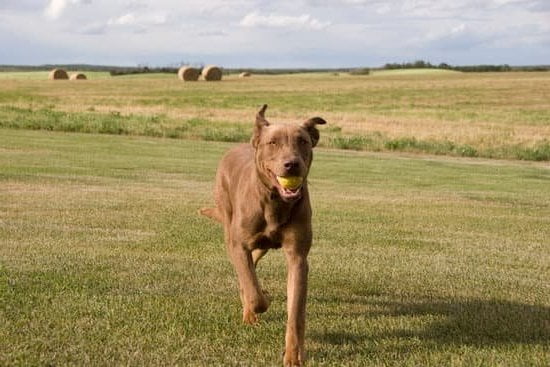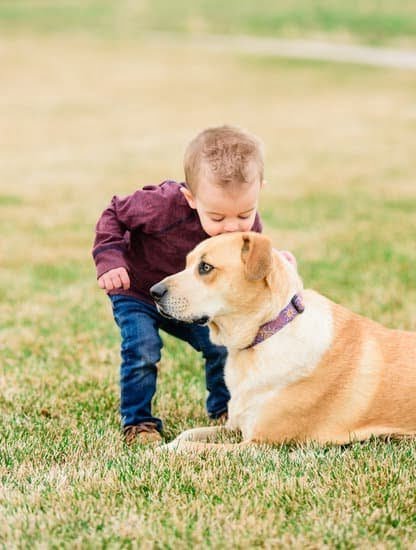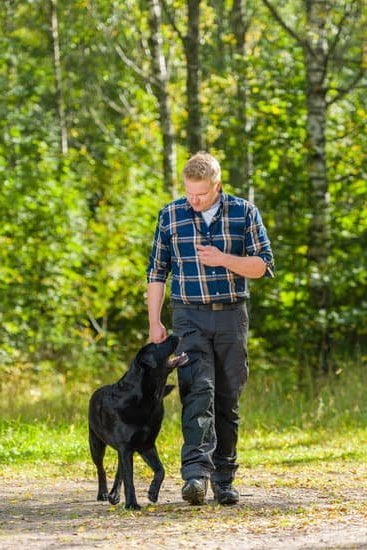Training your dog to sleep outside can be a rewarding experience for both you and your furry companion. By teaching your dog to sleep outdoors, you are not only providing them with a sense of independence but also giving them the opportunity to enjoy the fresh air and nature. In this article, we will explore the steps on how to train your dog to sleep outside effectively while considering their comfort and safety.
Assessing whether your dog is ready for outdoor sleeping is crucial before starting the training process. Factors such as breed, age, health condition, and temperament play a significant role in determining if your dog will thrive sleeping outside. It’s essential to ensure that your furry friend is mentally and physically prepared for this transition before making any changes to their sleeping routine.
Creating a comfortable outdoor sleeping area is key to successful training. Your dog’s outdoor bed should be cozy, weather-resistant, and placed in a secure location that provides shade during hot days and shelter from harsh weather conditions. Additionally, establishing a bedtime routine for your dog will help them associate bedtime with their outdoor sleeping area, making the adjustment smoother for them.
Assessing Your Dog’s Readiness
Dogs are territorial animals by nature, and many enjoy spending time outdoors. However, not all dogs are immediately suited for sleeping outside. Before beginning the training process on how to train your dog to sleep outside, it is crucial to assess whether your furry friend is ready for this transition. Factors to consider include your dog’s breed, age, health condition, coat type, and overall temperament.
For instance, breeds that have thick coats such as Siberian Huskies or Alaskan Malamutes may be more equipped to handle outdoor sleeping during colder months. On the other hand, small or short-haired breeds might struggle with outdoor sleeping during chilly nights. Additionally, older dogs or those with health issues may find it uncomfortable or even risky to sleep outside. It’s essential to take all these factors into account before starting the training process.
One way to determine if your dog is ready for outdoor sleeping is by observing their behavior when spending time outdoors during the day. If your dog seems relaxed, enjoys lounging in the yard, and shows no signs of distress or anxiety when left alone outside for short periods, they might be a good candidate for transitioning to outdoor sleeping.
However, if your dog exhibits signs of stress or discomfort while outdoors, it may be best to address any underlying issues before attempting to train them to sleep outside at night.
| Assessing Your Dog’s Readiness | Factors to Consider |
|---|---|
| Breed | Thick coats vs. short-haired breeds |
| Age | Younger dogs vs. older dogs |
| Health Condition | Dogs with health issues may not be suitable |
Creating a Comfortable Outdoor Sleeping Area for Your Dog
When training your dog to sleep outside, it is crucial to create a comfortable and safe outdoor sleeping area for them to feel secure and at ease. Here are some tips on how to set up a cozy spot for your furry friend:
- Choose a sheltered spot: Select an area in your backyard that is protected from harsh weather conditions, such as rain, wind, or extreme heat. Providing a shelter or doghouse can offer additional protection and privacy.
- Provide bedding: Offer soft bedding materials like blankets, cushions, or specially designed outdoor dog beds to keep your pet warm and comfortable throughout the night.
- Ensure access to water and food: Make sure your dog has easy access to fresh water and food in their outdoor sleeping area. Consider placing elevated bowls to prevent contamination from dirt or insects.
It is essential to make the outdoor sleeping area inviting for your dog, so they feel encouraged to spend the night outside comfortably. By creating a designated space that meets their needs, you are setting the foundation for successful training on sleeping outdoors.
Additionally, consider adding familiar scents or comforting items from inside the house to help your dog feel more at home in their new outdoor sleeping area. By incorporating elements that they associate with security and relaxation, you can facilitate a smoother transition into spending nights outside. With patience and proper adjustments based on your dog’s preferences, you can gradually train them to sleep peacefully outdoors.
Establishing a Bedtime Routine for Your Dog
Consistency Is Key
When training your dog to sleep outside, consistency in their bedtime routine is crucial. Dogs thrive on routines and predictability, so establishing a consistent schedule will help them adjust to sleeping outdoors more easily. Try to feed your dog at the same time each evening, followed by a bathroom break, and then lead them to their designated sleeping area. Consistent bedtime signals will help your dog understand when it’s time to settle down for the night.
Creating a Calming Environment
As part of your dog’s bedtime routine, creating a calming environment in their outdoor sleeping area is essential. Provide cozy bedding or a comfortable dog bed that is suitable for outdoor use. Consider adding familiar items from inside your home, such as a blanket or toy, to make the space feel more inviting and comforting for your dog. Additionally, dimming the lights or playing soothing music can help create a peaceful atmosphere that promotes relaxation and sleep.
Positive Reinforcement at Bedtime
During the bedtime routine, incorporating positive reinforcement techniques can encourage your dog to associate their outdoor sleeping area with positive experiences. Offer treats or praise when they settle down in their designated spot, reinforcing good behavior and helping them feel more comfortable in their new sleeping arrangement. By consistently rewarding positive actions at bedtime, you can effectively train your dog to view sleeping outside as a rewarding and enjoyable experience.
By establishing a consistent bedtime routine, creating a calming environment in the outdoor sleeping area, and using positive reinforcement techniques, you can effectively train your dog to sleep outside in a safe and comfortable manner. With patience, persistence, and understanding of your dog’s needs, you can successfully transition them to outdoor sleeping while ensuring they feel secure and content throughout the process.
Introducing Your Dog to the Outdoor Sleeping Area Gradually
Slow and Steady Approach
When it comes to training your dog to sleep outside, the key is to take a slow and steady approach. Rather than forcing your furry friend to spend the entire night outdoors right away, start by gradually introducing them to the outdoor sleeping area. Begin by having your dog spend short periods of time in their designated outdoor spot during the day, allowing them to get comfortable with the surroundings before moving on to longer periods of time.
Positive Associations
To help your dog feel more at ease with sleeping outside, it’s important to create positive associations with their outdoor sleeping area. Consider placing their favorite toys or bedding in the space, along with some treats or a familiar scent. By associating this area with things that your dog loves, they will be more likely to feel comfortable and secure when it comes time for bedtime.
Gradual Transition
As your dog becomes more accustomed to spending time in their outdoor sleeping area during the day, you can start transitioning into nighttime training. Begin by having them sleep outside for short periods while keeping a close eye on them.
Gradually extend the amount of time they spend outdoors until they are able to comfortably sleep through the night. Be patient and consistent with this process, offering plenty of praise and rewards as your dog learns how to sleep peacefully outside.
Using Positive Reinforcement Techniques to Encourage Outdoor Sleeping
Training your dog to sleep outside can be a rewarding experience for both you and your furry friend. Positive reinforcement techniques play a crucial role in encouraging your dog to embrace their new sleeping area. One effective method is to provide treats or rewards whenever your dog willingly spends time in their outdoor sleeping space. This helps create a positive association with the outdoor area and reinforces the behavior of sleeping outside.
Consistency is key when using positive reinforcement to train your dog. Make sure to praise and reward your dog every time they choose to sleep outside, especially in the initial stages of training. This will help them understand that staying outside during bedtime leads to positive outcomes. Additionally, consider using verbal cues or commands like “Time for bed” or “Go to your spot” when guiding your dog towards their outdoor sleeping area.
Another helpful technique is to gradually increase the amount of time your dog spends outdoors during the night. Start by having short sessions where your dog sleeps outside and gradually extend the duration as they become more comfortable with the idea.
Remember to always reward good behavior and avoid punishing or scolding your dog if they are hesitant about sleeping outside at first. Patience and positive reinforcement are essential for successful training on how to train my dog to sleep outside.
| Benefits of Positive Reinforcement | Consistency in Training |
|---|---|
| Creates a positive association with outdoor sleeping area | Praise and reward every time reinforces desired behavior |
| Encourages dogs to willingly spend time outside during bedtime | Use verbal cues like “Time for bed” for guidance |
| Helps dogs understand that outdoor sleeping leads to rewards | Gradually increase outdoor sleeping duration over time |
Dealing With Common Challenges and Setbacks During the Training Process
Training your dog to sleep outside can come with its fair share of challenges and setbacks. It’s important to remember that each dog is unique, and the training process may require patience and consistency. Here are some common challenges you may encounter while teaching your furry friend to sleep outdoors, along with tips on how to overcome them:
- Resistance to the new environment: Some dogs may initially resist sleeping outside due to unfamiliar sounds, smells, or temperatures. To help your dog adjust, gradually introduce them to the outdoor area by spending time together during the day. Offer treats, toys, and positive reinforcement to create a positive association.
- Anxiety or stress: Dogs who are used to sleeping indoors may experience anxiety when transitioning to an outdoor sleeping area. To alleviate their stress, provide familiar items such as their favorite blanket or toy. Additionally, consider playing calming music or using pheromone diffusers designed for anxious dogs.
- Weather-related discomfort: Extreme temperatures or inclement weather can make it challenging for dogs to sleep outside comfortably. Ensure your dog has access to shelter, such as a covered porch or insulated doghouse. Provide bedding like blankets or a heated pad during colder months and access to shade during hot summer days.
Remember that consistency is key when training your dog to sleep outside. By addressing these common challenges with patience and understanding, you can help your canine companion feel safe and secure in their new sleeping environment.
It’s essential to monitor your dog’s progress throughout the training process and make any necessary adjustments as needed. If you notice persistent signs of distress or discomfort, consider consulting with a professional dog trainer or veterinarian for additional guidance on how best to train your dog to sleep outside successfully.
By staying attuned to your dog’s needs and providing positive reinforcement and support, you can navigate any challenges that arise during the training process. With time and dedication, you’ll soon have a well-adjusted pup who sleeps soundly outdoors in a safe and comfortable manner.
Monitoring Your Dog’s Progress and Making Adjustments as Needed
As you continue the process of training your dog to sleep outside, it is essential to monitor their progress closely and make adjustments as needed. Every dog is unique, and some may take longer to adapt to sleeping outdoors than others. By keeping a close eye on your dog’s behavior and reactions, you can determine if they are comfortable with the new sleeping arrangement or if they need additional support.
One way to monitor your dog’s progress is by observing their behavior during bedtime. Does your dog seem anxious or restless when it’s time to sleep outside? Are they exhibiting signs of discomfort or distress? Pay attention to any changes in their demeanor or habits that may indicate they are struggling with the transition. By staying attuned to your dog’s needs, you can address any issues promptly and make necessary adjustments to ensure their well-being.
If you notice that your dog is having difficulty sleeping outside, don’t be discouraged. Training takes time and patience, and setbacks are a normal part of the process. Consider revisiting steps such as creating a comfortable outdoor sleeping area, establishing a bedtime routine, or using positive reinforcement techniques.
It may also be helpful to seek guidance from a professional trainer on how to train your dog to sleep outside effectively. Remember, every dog learns at their own pace, so be patient and understanding as you work towards achieving success in this training endeavor.
Celebrating Success
Training your dog to sleep outside can be a rewarding experience for both you and your furry friend. It allows your dog to enjoy the fresh air and independence while providing you with a quieter night’s sleep indoors. By following the steps outlined in this guide, you can successfully transition your dog to sleeping outside in a safe and comfortable manner.
Once your dog has successfully adapted to sleeping outside, it’s essential to celebrate the success of this training process. Enjoying the benefits of having a well-trained dog that sleeps outdoors is truly fulfilling. Your dog will have more freedom, which can lead to improved behavior and overall happiness. Additionally, you can take pride in the accomplishment of effectively training your dog to sleep outside.
As you continue to monitor your dog’s progress, remember that consistency is key. Whether it’s maintaining a bedtime routine or using positive reinforcement techniques, staying committed to the training process will reinforce good behavior and habits. Remember that each dog is unique, so making adjustments as needed based on your dog’s individual preferences and behaviors is crucial for long-term success in outdoor sleeping training.
In conclusion, by setting up a comfortable outdoor sleeping area, implementing a bedtime routine, gradually introducing your dog to their new sleeping arrangement, and utilizing positive reinforcement techniques, you can train your dog to sleep outside effectively. With patience, dedication, and love, you can enjoy the benefits of having a well-trained companion who sleeps peacefully under the stars.
Frequently Asked Questions
Can You Make Your Dog Sleep Outside?
Making your dog sleep outside is not recommended, especially in extreme weather conditions. Dogs are social animals that thrive on human companionship and are vulnerable to the elements when left outdoors. It can also lead to behavioral issues and feelings of abandonment.
Is It OK to Leave Your Dog Outside at Night?
Leaving your dog outside at night raises safety concerns, as they may be exposed to potential dangers such as wild animals, thieves, or adverse weather conditions. Dogs can also become anxious or lonely when left alone in unfamiliar surroundings during nighttime.
How Long Does It Take Puppy to Get Used to Sleeping Outside?
The time it takes for a puppy to get used to sleeping outside varies depending on the breed, age, and individual personality of the dog. It is essential to introduce them gradually and provide a comfortable outdoor sleeping area with adequate shelter, water, and warmth. Patience and positive reinforcement are key in helping puppies adjust to this new environment.

Welcome to the blog! I am a professional dog trainer and have been working with dogs for many years. In this blog, I will be discussing various topics related to dog training, including tips, tricks, and advice. I hope you find this information helpful and informative. Thanks for reading!





